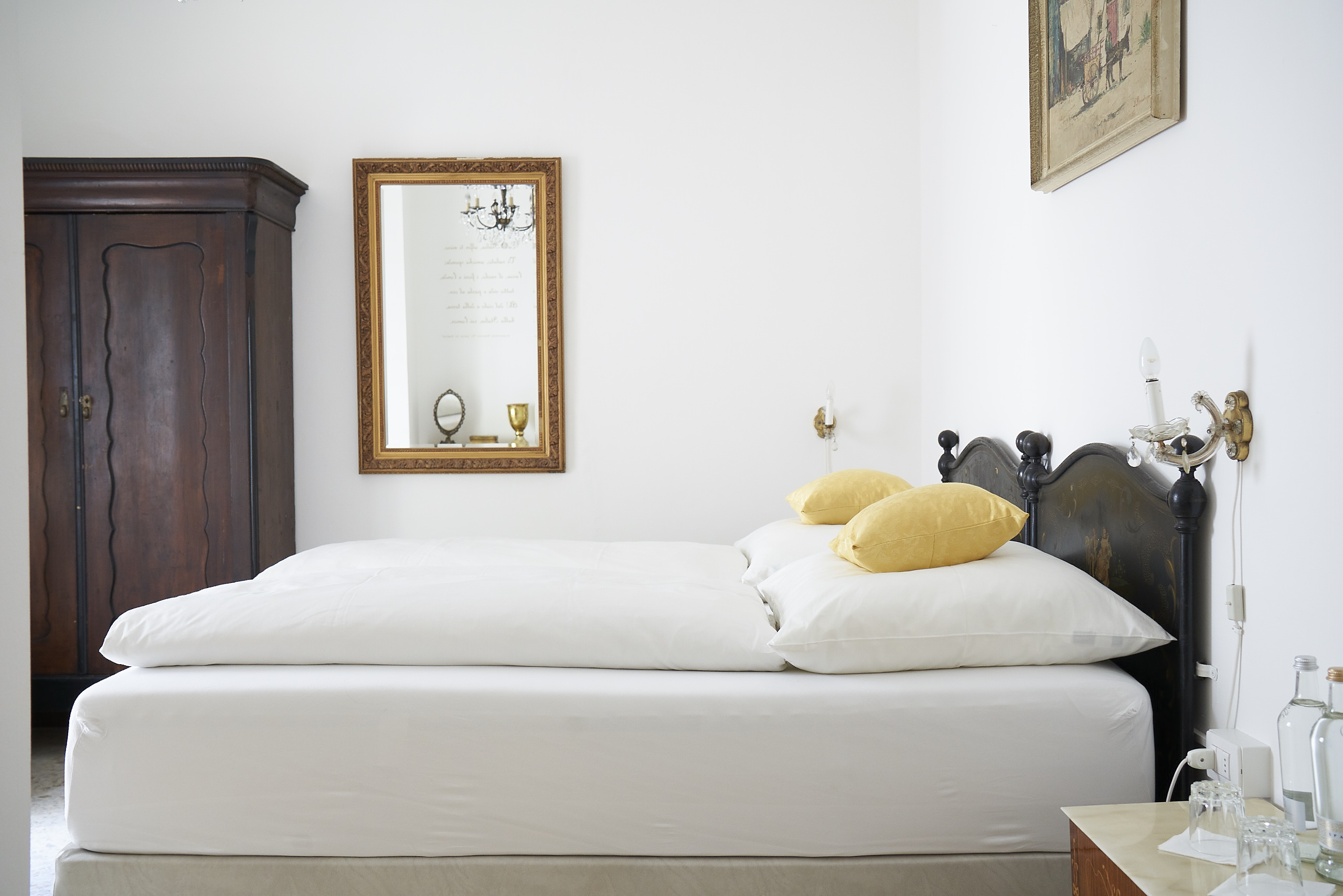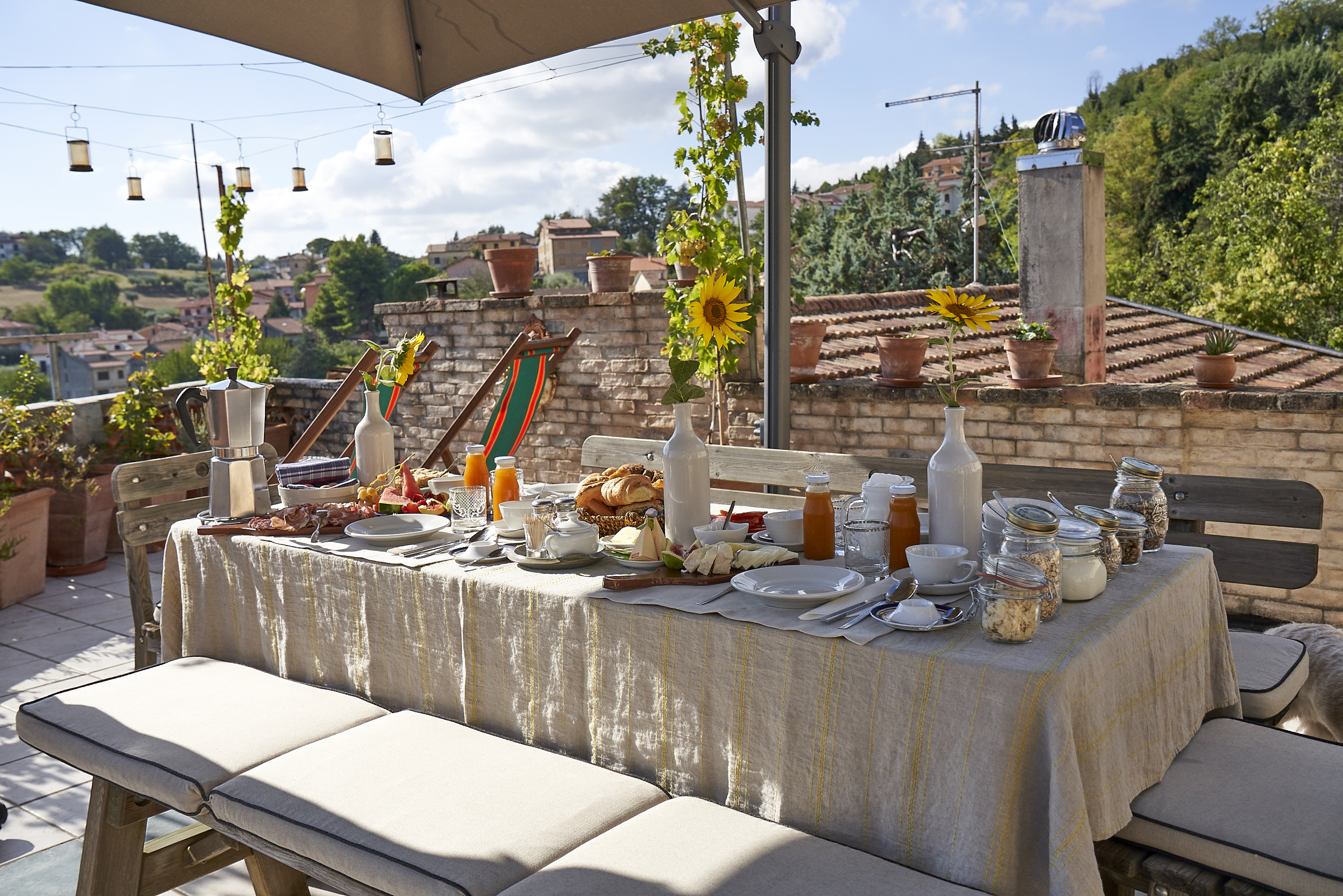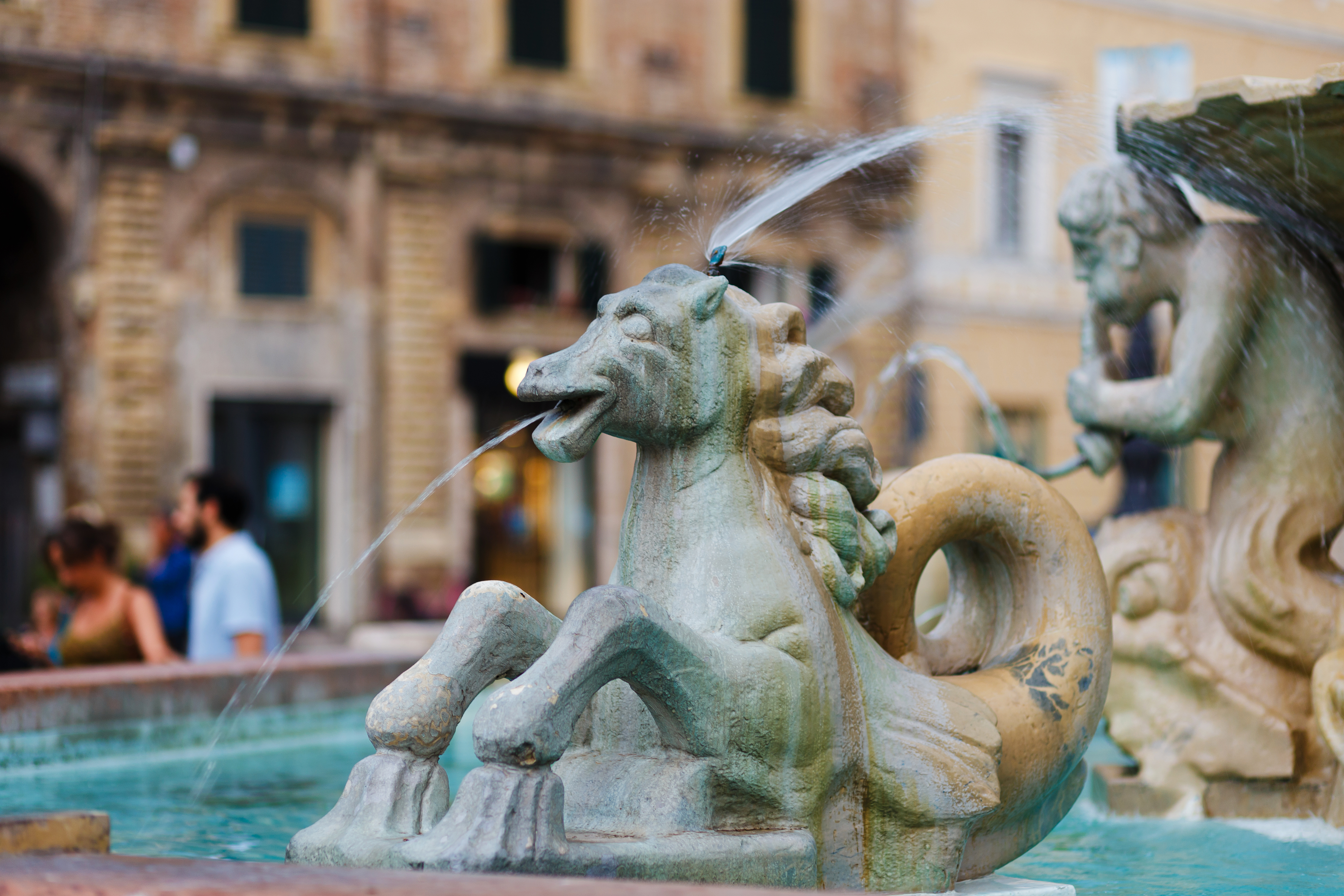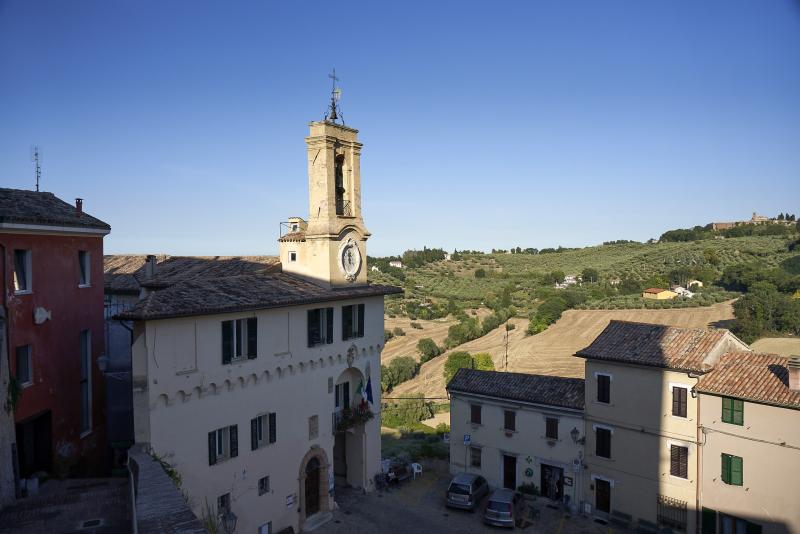In Cartoceto in Marche, front doors are often left unlocked, people linger over conversations, and meals tend to include ingredients sourced directly from the land under you.
Surrounded by olive groves, 16 miles southeast of Pesaro at 770 feet above sea level, Cartoceto was likely founded by Carthaginians during the second Punic War. It was a fortified city protecting the city of Fano until an earthquake took the village down in 1572. The town was slowly rebuilt starting in 1683. The first building in the village was home to clergy and the mayor and is now Villa Cartoceto, a four-room guest house.
Cartoceto, a village with approximately 400 residents, is close enough to the cities of Fano and Pesaro that you can sojourn there and also be in both city centers in less than 25 minutes; Urbino — a UNESCO World Heritage Site — is also only 30 minutes away. But before heading off to Pesaro, Italy’s 2024 Capital of Culture, here’s how to linger in Cartoceto.
Sleep in the rooms of former mayors and popes

Villa Cartoceto was the first building in the historic center and home for the town’s mayor and clergy until 1871. It was then a family home until German-Austrian couple Axel Bach and Eva-Maria Walch bought it in 2001, building on their success running a hotel in Austria, to open Villa Cartoceto as a guest house and bed and breakfast.
Sleeping in one of Villa Cartoceto’s four rooms reveals some of the building’s and the village’s history. One is where the mayor slept, and another, next door, the priest. The second room also has 17th-century frescoes on the walls, discovered during a 2003 renovation.
Eat directly from the source

Staying in the villa is also a way to learn about the area’s culinary traditions. Villa Cartoceto produces most of what is served to guests from its about 40-acre organic farm. Produce served at breakfast each morning on the sun deck and in the evenings at their restaurant, Osteria del Cardinale, across the street and helmed by Eva-Maria in the kitchen and Axel for service, is truly 0 km. The menu changes seasonally, and at the core of Eva-Maria’s philosophy — following the concept of Slow Food — is introducing visitors to regional ingredients such as local fresh fish and cheeses like goat and pecorino made by their neighbor.
Osteria del Cardinale is one of the many restaurants and food purveyors around Marche that follow the principles of the Slow Food movement. Down the road from Villa Cartoceto is Gastronomia Beltrami, led by Vittorio Beltrami, who has been called the “Einstein of cheeses.” Given that moniker both for his wizard hair and inventive aging methods for pecorino (underground, grape- and even olive ash-seasoned), Beltrami’s bottega has become a Marche destination. While staying in Cartoceto, you can even take lessons in cheesemaking — on request — at the shop.
Taste Cartoceto DOP olive oil (and see an oil mill-turned-theater)
As with the tradition of cheesemaking, the production of olive oil has a long history in Cartoceto. The town’s central frantoio (olive oil mill) was in Piazzale Marconi until the 18th century, when it was converted to be part of the town theater. Teatro del Trionfo today hosts private events and is sometimes open to the public, allowing you to see the central structure where the mill once stood. The town’s olive oil festival in November in Piazza Garibaldi is a chance to meet modern-day olive oil producers and taste the liquid gold Cartoceto DOP, the town’s oil with protected origin status.
Make your way to Pesaro, Italy’s 2024 Capital of Culture

From Cartoceto, it’s an easy 30 minutes north to the Adriatic Coast and Pesaro, Italy’s 2024 Capital of Culture. Pesaro has a well-rounded mix of historical sites and beach-worthy activities. As the former home of composer Gioachino Rossini, it’s also home to the Rossini Opera Festival each August and Tempietto Rossiniano, where you can see artifacts from the composer’s life. A filet mignon topped with foie gras and black truffle, Filet Rossini, is named for the composer and served in some Pesaro restaurants.
After fueling up, the best way to see the city — from its Liberty Style buildings to its beaches — is by grabbing a city bike and following the Bicipolitana. The 11 color-coded bike paths, some named for their scenery, such as centro (city center) and mare (beach), and the bike pickup points along the routes, make seeing the city at a relaxed pace even easier.
Spring, summer and fall are are ideal seasons to visit Cartoceto and Pesaro. Villa Cartoceto, as with many guest houses in the region, is open seasonally, typically from mid-May until November, timing with local festivals that celebrate the region and its history.
Villa Cartoceto is designed to be a relaxing holiday away from the path of mass tourism. Experience Italy as you know it from movies from the ‘50s and ‘60s, slow down, enjoy an Italian way of life, be part of the village, and feel pampered by your hosts. The luxury is that there is no luxury!













